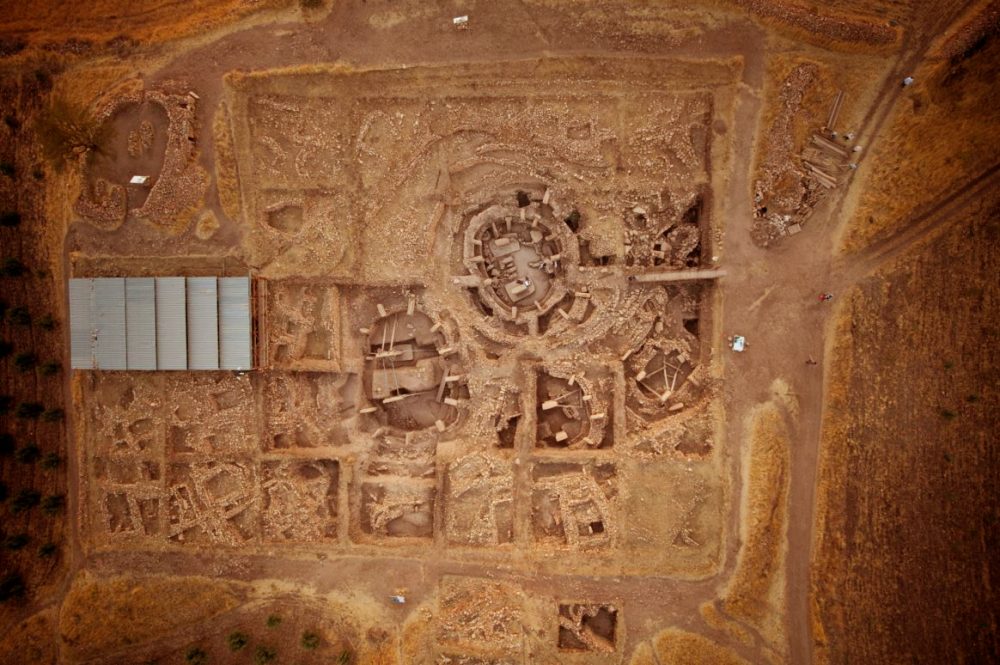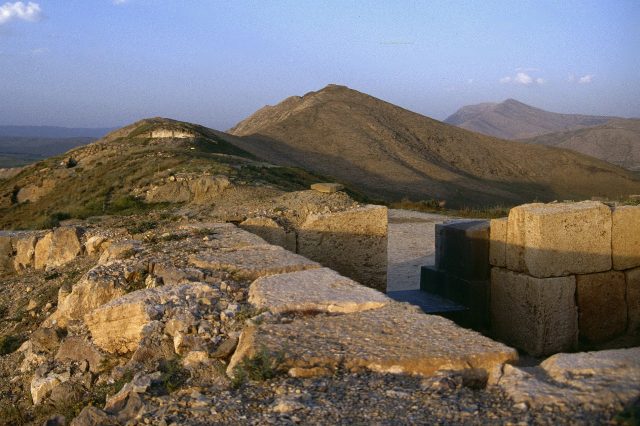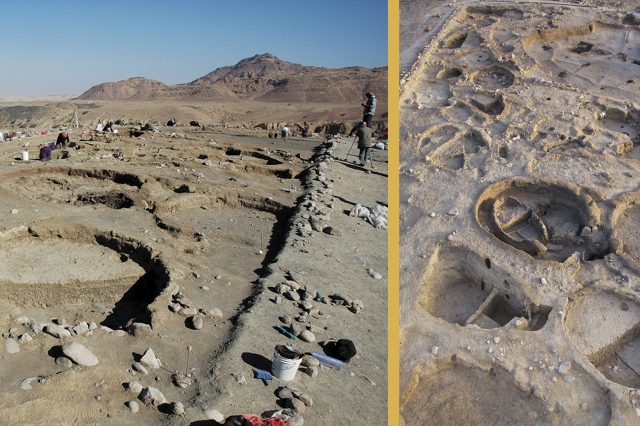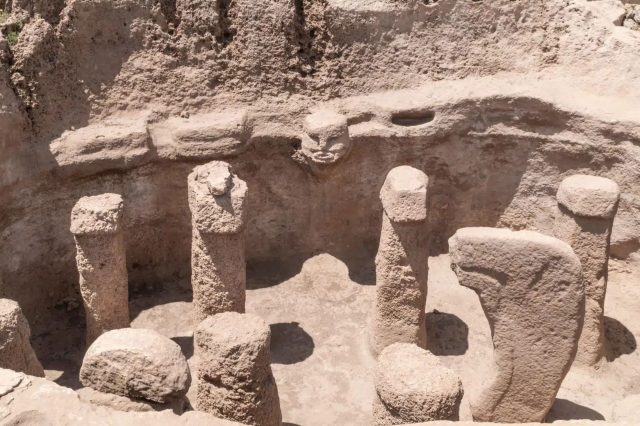There is conclusive evidence that the ancestors of the people that would go on to build Stonehenge came from present-day Turkey (Anatolia) thousands of years ago. Nothing as complex and as old as Göbekli Tepe has been discovered to date.
The geometric complexity of Göbekli Tepe, considered by experts the oldest temple in the world, is a wonder to scientists and also a great mystery: how could a Neolithic society build something like this?
Since German professor Klaus Schmidt discovered it in 1994, its construction has been attributed to hunter-gatherer populations some 12,000 years ago. This means that the ancient site located in present-day Turkey predates the pyramids by more than 7,000 years and other popular megalithic sites like Stonehenge by more than 6,000 years.
But there weren’t any complex societies capable of something like this back then, were there? If so, who could have built such a complex and intricate site, a time when “no complex societies” existed on Earth, during the last ice age?
Despite the claims that Göbekli Tepe was not built by an advanced society, its history—written in stone—tells otherwise; the arrangement of its pillars and its decoration suggests that it must have been built by a complex civilization, something that scientists did not believe possible at that time. The answer remains shrouded in mystery.
A study in 2020 demonstrated that, whoever its builders were, they were advanced and possessed excellent knowledge of geometry. They were very capable of applying “advanced” geometric principles into the construction of the site.
The study published in the Cambridge Archaeological Journal revealed that Göbekli Tepe’s builders were a “much more complex society than previously thought.”
Göbekli Tepe is currently being excavated by Turkish and German archaeologists. The ancient site is thought to have been erected around 10,000 BC. Without knowing the reason, this entire complex of stones, pillars, and sculptures were deliberately buried two thousand years later, around 8000 BC, remaining abandoned for 500 years.
Together with Nevalı Çori, Göbekli Tepe has revolutionized the understanding of the Eurasian Neolithic. It is considered the oldest temple or sanctuary globally, where “the consciousness of the sacred” was likely born, and it may have significantly contributed to the “spark of civilization.”
To date, more than 200 intricate pillars have been discovered inside 20 stone circles as Göbekli Tepe. Each of the pillars is massive; they measure up to 6 meters in height and have a weight of around 10 tons.
The stone pillars have been fitted into sockets that were hewn out of the bedrock. Most of the stones originated from local quarries, and some massive pillars are thought to have been quarried from stone deposits located as far as one kilometer away from the site.
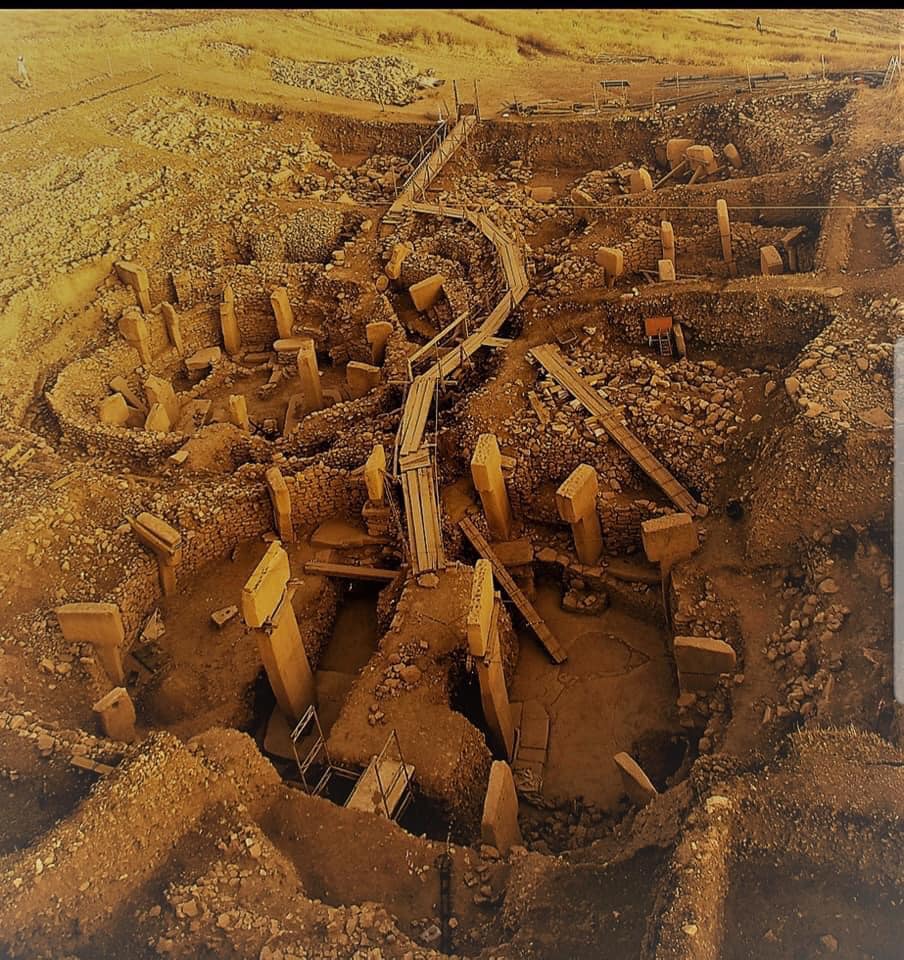
Although this distance may not seem like much, take into consideration that this was done 12,000 years ago and that at that time, people who worked the site managed to somehow transport pillars weighing 10 tons. Today, when transporting massive stones, we use powerful machines and transport trucks. What did our ancestors use?
Also, keep in mind that the site offers much heavier pillars as well. Evidence of 20-ton pillars has been discovered at Göbekli Tepe. Archaeologists have also found a 50-ton pillar still sitting in its quarry.
How Göbekli Tepe’s builders planned on moving such a massive stone remains a profound mystery.
However, knowing that they were a complex society, and not ordinary hunter-gatherers, with a piece of “advanced” knowledge in geometry and engineering, they somehow managed this and so much more.
Regrettably, other than depictions of animals, humanoid figures, and curious symbols, Göbekli Tepe’s builders left nothing behind.
For us to better understand who they were, we can excavate the ancient site, hoping to find out more clues about the mysterious builders.
So far, archaeologists have discovered many butchered bones belonging to the local animals such as pigs, geese, deer, and gazelle. These animals may have been consumed by the builders of the site.
The purpose of Göbekli Tepe is still a heavily-discussed subject. Nonetheless, it is usually agreed that—given there are no traces of houses or a settlement nearby or at the site, Göbekli Tepe was likely a temple or, as Schmidt would call it, “a cathedral on a hill.”
The notion that Göbekli Tepe was a Temple is supported to this date. However, archaeologists continue arguing that Göbekli Tepe is the oldest temple on Earth, and given its complexity and size, it may have attracted worshipers across vast distances.
I find the idea that Göbekli Tepe was a temple and no more than a temple amusing for one main reason; no conclusive evidence has been unearthed so far that suggests the site was a place of worship. Curiously, all similar sites, whether those located in Anatolia or even farther away like Stonehenge, are also considered places of worship. Although sites as Stonehenge may have been places where religious ceremonies were held, Gobkeli Tepe is different, and it’s mainly its size that boggles the mind.
To date, we’ve not excavated more than 5% of the site. This sole idea tells us that it may be too soon to tag a site of such complexity as the oldest temple on Earth despite decades of excavations and research. In other words, we shouldn’t jump to conclusions when analyzing and studying sites of such complexity.
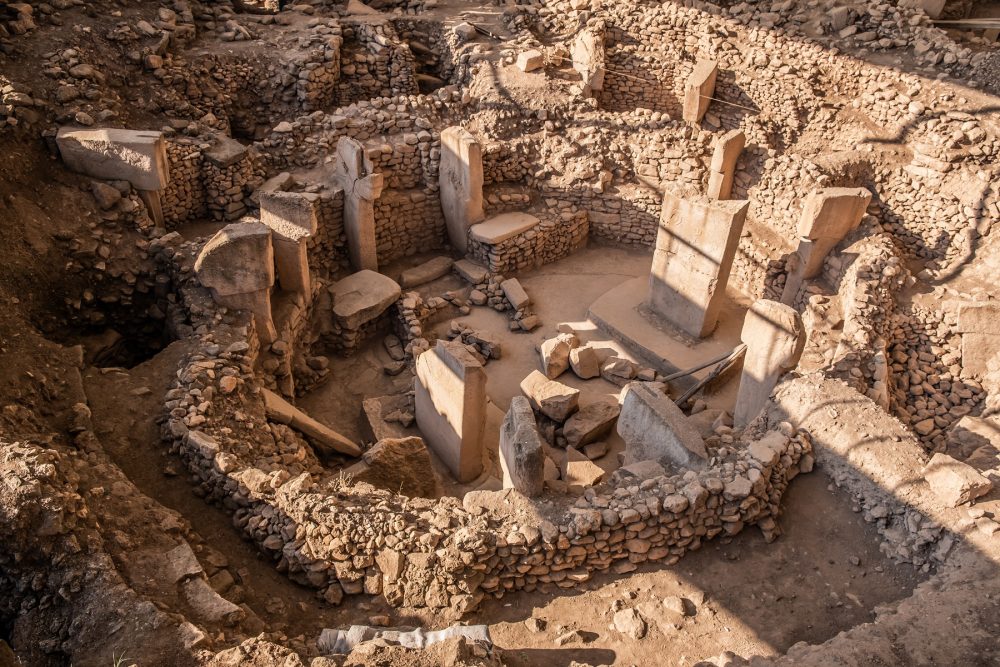
More importantly, there is nothing out there—at least not that we found to date—that matches Göbekli Tepe both in terms of size and age. The marvelous ancient site is the mother of all other megalithic sites. I believe that a complex society erected Göbekli Tepe for reasons that still remain shrouded in mystery. I think that this ancient site carries a message, written in stone, and one that we’ve only managed to solve to this date partially.
I also believe that the sole notion that there is nothing of similar magnitude predating Göbekli Tepe is one of the main reasons why the site may have given rise to all other megalithic sites that were built across vast areas.
I believe that Göbekli Tepe is the source of our megalithic monuments, both in Europe and parts of present-day Turkey all the way to Mesopotamia.
I think that Göbekli Tepe’s builders made their way across Europe, migrating and settling in various parts where they would erect massive stone circles using megalithic blocks. I also believe that advanced craftsmanship was lost in time and that much younger sites are lesser forms of Göbekli Tepe’s architecture. Instead of evolving, I think that these sites de-evolved.
The further away we move from Göbekli Tepe, the lesser similar sites become. The workmanship is lesser, and the complexity involved in the construction decreases. This may be because many of these sites were built across various centuries, where the knowledge became lost.
My idea is partially backed up by a study published last year that has found that Stonehenge’s builders’ origins can be traced back to present-day Turkey.
Researchers analyzed DNA samples and found that the ancestors of the people who are thought to have erected Stonehenge traveled thousands of kilometers, making their way from present-day Turkey to modern-day England. The study revealed how the ancestors of Stonehenge’s builders came to Britain around 4,000 BC, some 1,000 years before Stonehenge was built.
Their evidence suggests that this ancient group of people traveled all the way from present-day Anatolia, making their way across Europe as early as 6,000 BC. As they traveled and spread across parts of Europe, they farmed and settled, and in certain places, erected massive megalithic monuments which, although impressive, are not as nearly as complex as the mother site of Göbekli Tepe.
I also believe that if Göbekli Tepe was indeed a place of worship or a temple, if you will, then the people that traveled across Europe and other parts of the world carried that same worship with them.
This would make Göbekli Tepe the place where the world’s first religion may have “sprung to life.”
Join the discussion and participate in awesome giveaways in our mobile Telegram group. Join Curiosmos on Telegram Today. t.me/Curiosmos

